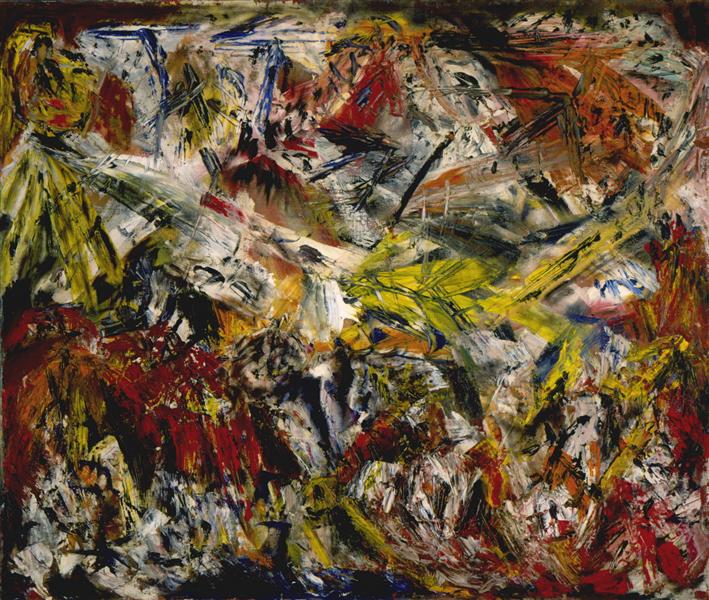
Marcel Barbeau, born in Montreal in 1925, was a seminal figure in the development of abstract art in Canada. His artistic journey began at the age of 19, when he enrolled at the École du Meuble in Montreal. There, he studied under the influential painter Paul-Émile Borduas and shared a studio with fellow student Jean-Paul Riopelle, who would also become a prominent figure in the art world. This period of Barbeau's life was crucial, as it set the stage for his involvement in one of the most revolutionary movements in Quebec's art history—the Automatists.
The Automatists and the Refus Global
Barbeau quickly became associated with Borduas' circle of students, who were united by a desire to break free from the conservative norms that dominated Quebec's art and society at the time. This group, later known as the Automatists, sought to explore new forms of expression through spontaneous, unstructured methods of creation. The Automatists held their first exhibition in 1946, marking the beginning of a movement that would challenge and redefine Canadian art.
In 1948, Barbeau, alongside fourteen other artists, signed Borduas' manifesto Refus Global (Total Refusal), a groundbreaking document that called for the liberation of Quebec's culture from the repressive influence of the Church and traditional values. This manifesto was not only a pivotal moment in Quebec's cultural history but also a defining point in Barbeau's career, as it solidified his commitment to artistic freedom and experimentation.
Exploration and Evolution
While some members of the Automatists moved on to form other groups, such as the Plasticiens, Barbeau chose to continue his independent exploration of various artistic styles. Although he dabbled in geometric abstraction, his work remained rooted in the principles of Automatism. Barbeau exhibited his work regularly, with notable shows in New York City, Montreal, Ottawa, and Quebec City. His small, non-objective ink paintings at the Wittenborn and Shute Gallery in NYC in 1952 garnered attention, establishing him as a significant figure in the art world.
Throughout the 1950s and 60s, Barbeau's work evolved as he experimented with different techniques and mediums. In 1957, he returned to drawing from live models and began incorporating calligraphy into his art. He also focused on collage, a medium that became central to his work until 1961. His relentless pursuit of new forms of expression led him to explore Op Art and film techniques between 1964 and 1968. During this period, he produced Bas-du-fleuve, a striking large canvas acquired by the National Gallery of Canada, which features vertical wavy white lines on a black background, evoking the natural rhythm of a riverbed.
International Recognition and Later Career
Barbeau's quest for artistic innovation took him to Paris from 1962 to 1964, where he exhibited at the Galerie Iris Clert. He later moved to New York City, where he lived and worked for four years, showing his work at the East Hampton Gallery and participating in group exhibitions. His piece Tonquiléne (1964) attracted significant attention, winning the Samuel and Ayala Zacks Purchase and Gift Award to the Civic Museum in Amsterdam. This work, characterized by its dynamic composition and lively elements, reflected the lasting influence of Borduas while showcasing Barbeau's unique voice.
In 1969, the Winnipeg Art Gallery, in collaboration with the Musée d'art contemporain in Montreal, held a retrospective of Barbeau's work, offering a comprehensive view of his evolving styles. From gestural painting and abstraction to collage and hard-edge painting, Barbeau's oeuvre demonstrated his continuous search for new ways to express himself.
Despite his success, Barbeau took a hiatus from painting in 1970 while living in California. However, his passion for art reignited in 1971 when he returned to painting and moved back to Paris. There, he participated in the exhibition Borduas et les Automatistes at the Galerie Nationale du Grand Palais.

Legacy and Continued Influence
Marcel Barbeau's impact on Canadian art is profound. He held over 26 solo exhibitions across the globe, with his works being featured in numerous public and corporate collections. His dedication to exploring new forms and styles remained unwavering throughout his career, as evidenced by his extensive body of work that spans gestural painting, abstraction, collage, Op Art, and sculpture.
In 1990, a book on Barbeau's life and work was published, offering a comprehensive analysis of his artistic theories and career. The book, titled Marcel Barbeau: Le Regard en Fugue (Fugato), was written by Carolle Gagnon and Ninon Gauthier, with the latter providing a personal perspective on Barbeau's career. This publication further cemented Barbeau's status as a key figure in Canadian art history.
Marcel Barbeau's relentless pursuit of artistic freedom and innovation has left an indelible mark on the art world. His work continues to inspire and challenge, reminding us of the power of creativity to transcend boundaries and redefine cultural norms. Today, Barbeau lives in Montreal with his wife, Ninon Gauthier, where he continues his search for new forms and styles to express his ever-evolving artistic vision.
Browse our collection of Canadian paintings for sale at the Canadian Classic Fine Art gallery, The best place to buy a painting online. We provide free shipping anywhere in Canada and the United States. Our Montreal art gallery sells paintings online exclusively and have a 14 days return policy.
